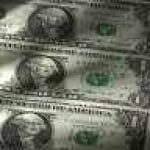
According to the Federal Reserve, manufacturing increased 0.9 percent in December…its biggest gain since December 2010. Manufacturing’s still about 8 percent below its July 2007 pre-recession peak, but it has increased nearly 15 percent from its recession low. Industrial output, on the other hand, is now less than 5 percent below its September 2007 pre-recession peak, and has increased more than 14 percent from its June 2009 recession low.
No doubt, it has been a long hard slog just to get back to within spitting distance of level ground. Who knows if industrial production will continue charting its course back up and to the right? Perhaps this is all just a big economic head fake before things roll down the mountain again. No one knows for certain, at the moment. But we’re confident we’ll all know in good time.
In the interim, the cost of producing goods both decreased and increased in December. The latest producer price index (PPI) released by the Bureau of Labor Statistics decreased 0.1 percent. Lower food and energy prices helped reduce production costs. However, the core PPI, which excludes food and energy, spiked 0.3 percent.
Price inflation, as measured by the consumer price index, appears to be benefiting from lower energy and food prices too. Yesterday the Labor Department reported that consumer prices were unchanged last month. Obviously, when energy and food prices begin rising again, prices and production costs will increase significantly.
Quite frankly, these moderate price increases will not last…
Juicing Up the Economy
Jim Rogers, speculator extraordinaire, thinks the U.S. government will spend money it doesn’t have and the Federal Reserve will print money to ‘juice up’ the economy to secure an election year victory.
“You have to remember two things — election in America in November, so you are going to see a lot of good news. Of course you have the American government spending staggering amounts of money right now, printing a lot of money and getting ready for the election,” said Rogers to The Economic Times, an Indian English-language daily newspaper.
“It happens every four years in America. They do their best to get the economy juiced up so they can win the election.”
Of course, the Obama administration and Fed Chairman Bernanke have been juicing the economy all along. They’ve been hard at it…doing everything they can to pump up the economy for the last three years. The Treasury has run trillion dollar deficits every year and the Fed has set the federal funds rate at nearly zero and executed two rounds of quantitative easing.
For the most part, the effects of their mass intrusion into the economy have gone unseen. The economy’s staggered along like a lethargic vagrant and price inflation has been moderate. That appears to be changing…
Heating the Stove with Furniture
If European debt contagion doesn’t spread to the U.S. financial system and infect the U.S. economy, economy growth, supported by debt base consumer spending, could finally let the inflation cat out of the hat. We’ve covered this extensively in the last two issues of the Economic Prism.
In short, consumers are running up debt at the fastest rate in a decade. This, in effect, is the transmission device Bernanke needed to get the $2 trillion he’s added to the Fed’s balance sheet into the economy. As this money floods into the economy Bernanke loses control of where it goes and the velocity at which it travels.
The Fed has already printed way too much money. If they go about printing more, like Rogers believe they will, it will have the effect of a broken gas line on a structure fire. Inflation will explode. Yet, before it explodes, it will appear that a real boom to the economy is occurring. It will feel good in the short term…but there will be consequences.
The feel good part of the cycle is the seemingly sweet area we are entering. Inflation is low, business activity is improving, and banks are even loaning out money again. But don’t be fooled by what’s about to happen…the boon to the economy will be fleeting. Here’s what we mean…
“It may sometimes be expedient for a man to heat the stove with his furniture,” explained Austrian Economist Ludwig von Mises, in Human Action. “But if he does, he should know what the remoter effects will be. He should not delude himself by believing that he has discovered a wonderful new method of heating his premises.”
Sincerely,
MN Gordon
for Economic Prism
Return from Heating the Stove with Furniture to Economic Prism




